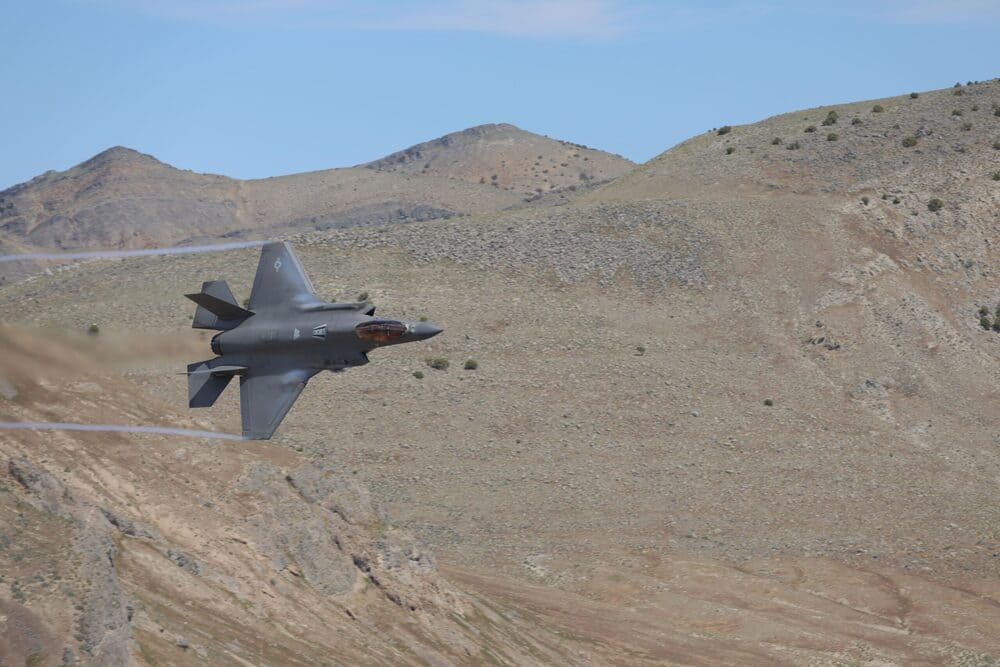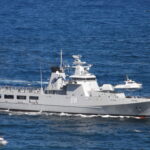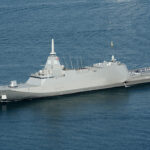Belgium signed off on a new defense strategy Friday that ramps up it’s fighter jet numbers, rebuilds ground-based air defenses, and adds a third anti-submarine frigate – moves meant to plug serious gaps after years of lagging behind on NATO spending.
Defense Minister Theo Francken described the shift as a major pivot, moving the military away from low-intensity overseas missions and toward high-stakes deterrence and conflict readiness. He said the forces need a “real transformation”, and warned that just buying new gear won’t be enough without more troops and training infrastructure.
Parliament backed a path to reaching 2% of GDP for defense by 2025 – about €12.8 billion – up from roughly 1.29% this year. Officials say they’ll look into further increases after NATO leaders endorsed a 3.5% benchmark in June. Budget forecasts suggest defense spending could grow to €16.5 billion by 2033 and hit €21.3 billion in 2034.
The centerpiece of the plan is the purchase of 11 more F-35A fighters for €1.67 billion, raising Belgium’s total future fleet from 34 to 45 aircraft. Orders are planned for next year. Eight jets has already been delivered, and the full fleet is expected to reach operational status by early 2031.
Francken has asked Italy to handle assembly of the additional jets, hoping for greater industrial returns through work on the final assembly line in Cameri. Belgium also hinted at broader industrial offsets, as it trys to draw in allies for joint munitions production and maintenance operations.
But the air force upgrade goes beyond just fighter jets. Right now, Belgium has no national missile defense system. That’s set to change. The plan calls for 10 NASAMS batteries from Kongsberg, with contracts likely in 2026 and a budget of around €2 billion. A second layer – three long-range systems – is budgeted at another €2 billion, with a first deal targeted in 2029. These systems must fully integrate with Dutch assets.
The air defense net will focus on key locations: Antwerp’s port, NATO HQ near Brussels, critical energy facilities, and vital logistics routes. Planners are building the concept around a layered radar system and a fully integrated national air picture.
On the ground, the army will complete its medium motorized brigade and create a lighter brigade, plus a joint recon battalion with Luxembourg. The medium brigade will include around 7,800 troops and 2,700 vehicles, with Belgium aiming to make it NATO-ready by 2030. €13.9 billion is set aside for motorized capabilities, with €6 billion going toward combat maneuver platforms.
Ammunition shortages – especially exposed by the war in Ukraine – are getting new attention. Belgium will invest in stockpiles of 155mm shells, air-to-air missiles, and torpedoes. Long-term contracts are being worked out to avoid future gaps.
At sea, Belgium’s getting a third anti-submarine frigate for about €1.3 billion. The move matches a Dutch decision to double its own ASW frigate order, helping ensure enough NATO escort ships in the North Sea.
There’s also plans to expand unmanned systems, though not on a large scale. Belgium will buy a third MQ-9B SkyGuardian drone in 2027 for €254 million, increasing surveillance and patrol reach. The plan also mentions a combat drone unit built around loitering munitions and resistant comms.
Belgium plans to grow from 26,200 troops in 2025 to 29,000 by 2029 and 34,500 by 2034. Civilian staff will more than triple. The reserves will grow to 12,800, a fivefold increase. A voluntary service year, based on a Dutch model, will launch in 2026 to give young people a chance to serve.
Francken warned that the risk of war in Europe now is higher than it was during the Cold War. He said Europe has to take more responsibility, with the U.S. shifting it’s focus to Asia. Belgium supports a stronger European role within NATO and is exploring full participation in the Franco-German FCAS fighter project.
Belgium’s deficit hit 4.6% of GDP in 2024 and debt is over 103%. The finance ministry plans to count some infrastructure costs and frozen Russian assets toward the 2% defense goal. Going above 2% – toward the 3.5% NATO benchmark – would likely require borrowing or cutting back in other areas.
Industry insiders view the NASAMS purchase and long-range air defense layer as a chance to strengthen European missile cooperation. Belgian officials are pushing for systems that can share parts, training and data links with neighboring countries to help cut down costs.
The bigger F-35 fleet also changes the maintenance picture. With 45 jets, Belgium may need a stronger in-country support setup. Officials are looking at possibly teaming with the Netherlands for heavy maintenance or working directly with Pratt & Whitney’s European partners for engine upgrades.
But growing the force won’t be easy. Recruitment is tough in a tight labor market. The military plans to improve pay, housing and childcare, while also speeding up background checks and medical exams. Recruitment campaigns will run in both French and Dutch, aimed at students in tech schools and vocational programs.
Training facilities are also getting upgrades. The army will modernize it’s ranges and use simulations for drone swarms and artillery – lessons drawn from Ukraine. The air force will base its F-35 training at Florennes, with a secondary site at Kleine-Brogel. Navy crews will train in Dutch and Danish programs until the third frigate arrives.
Less visible, but important, are logistics reforms. Belgium will set up depots for fuel and ammo and upgrade rail links tied to NATO mobility corridors. Customs procedures for allied forces will be digitized to avoid slowdowns in a crisis.
The first NASAMS batteries, coming after 2026, will cover Brussels and Antwerp. Full coverage won’t arrive for several years. Long-range systems probably won’t show up until 2031, assuming contracts are signed in 2029. In the meantime, Belgium will rely on NATO support and fighter patrols to fill the gaps.
Planners acknowledge Europe’s defense industry can’t instantly meet demand. Belgium will join multinational ammo purchases and fund upgrades for Belgian suppliers. Contracts will include surge clauses and upfront payments to lock in production slots.
There are some concerns about shipyard capacity for the new frigate. Damen’s already handling multiple orders from EU partners. Belgium might shift some work to local yards in Zeebrugge, but key components like propulsion and sonar will stay with the original suppliers. Delivery is still tentative, somewhere between 2032 and 2034.
The public is not sufficiently informed or aware of threats, the paper says, and the ministry will launch a civic resilience program with schools and towns. Measures include cyber hygiene drives and civil defence drills revived after decades of pause.
Belgium’s choice to spread money across air, land, sea, and cyber instead of chasing one big flagship reflects balance inside the coalition. Flemish and Francophone parties wanted visible gain in all regions, so industrial workshare clauses sneaked into nearly every procurement line.
Most of the spending is scheduled to occur after 2030, when a new cabinet could redraw priorities. Multi-year contracts help lock promises, yet inflation or a sudden recession might erode buying power fast.
Peace rests on credible solidarity. Belgium expects loyalty from partners, so it must turn promises into real capability. The next nine years will show whether paper ambition become deployed force.
REFERENCE SOURCES
- https://www.atlanticcouncil.org/event/belgiums-defense-minister-on-europes-evolving-security-landscape/
- https://aviationweek.com/defense/aircraft-propulsion/belgium-acquiring-11-more-f-35s-eyes-larger-role-european-fcas
- https://theaviationist.com/2025/07/21/belgian-f-35-fleet-expansion/
- https://www.flightglobal.com/defence/belgium-to-buy-11-more-f-35s-and-seek-full-membership-in-european-fcas-development/163864.article
- https://www.defensenews.com/global/europe/2025/07/21/belgium-to-add-f-35s-spend-billions-on-anti-air-in-defense-catch-up/
- https://www.aa.com.tr/en/europe/belgian-government-approves-purchase-of-additional-f-35-jets/3635185
- https://www.belganewsagency.eu/ministers-reach-agreements-on-defence-strategy-home-searches-and-social-benefits
- https://www.belganewsagency.eu/belgium-to-buy-11-more-f-35s-and-boost-defence-budget-to-18-billion-eur
- https://www.belganewsagency.eu/belgian-government-reaches-agreement-on-strategic-vision-for-defence
- https://missiledefenseadvocacy.org/missile-defense-news/belgium-to-add-f-35s-spend-billions-on-anti-air-in-defense-catch-up/
- https://armyrecognition.com/news/army-news/2025/breaking-news-belgium-to-acquire-ten-nasams-batteries-from-norway-to-reestablish-air-defense-capability
- https://www.militaryperiscope.com/news/belgium-approves-expanded-defense-procurement-including-f-35-jets-and-new-frigate/
- https://www.reuters.com/world/europe/belgium-aims-hike-defence-spending-2-gdp-this-year-de-tijd-reports-2025-03-04/



